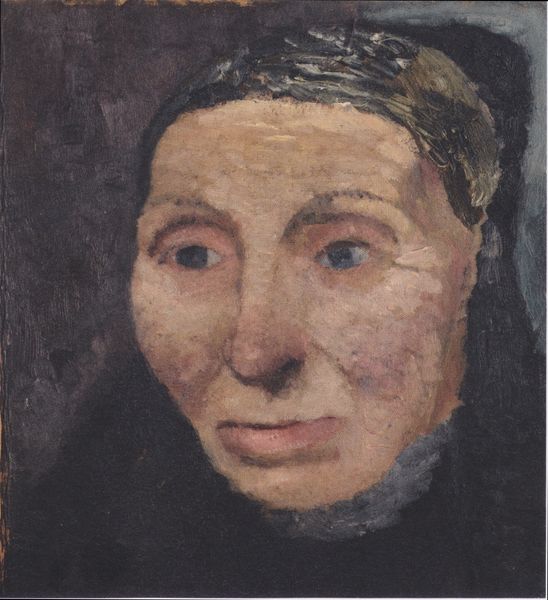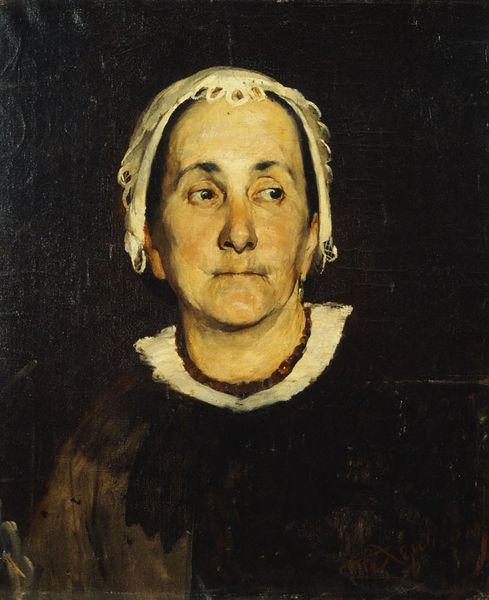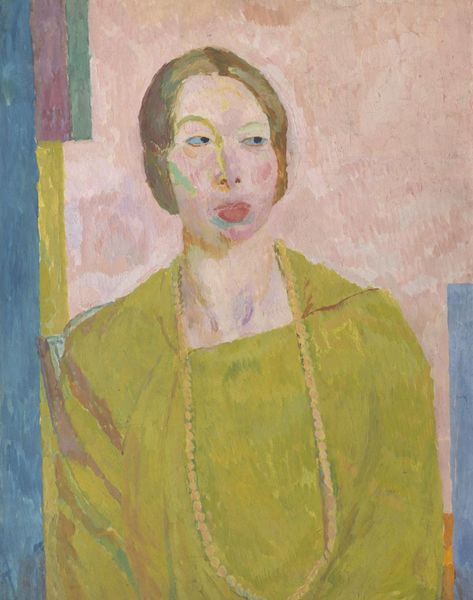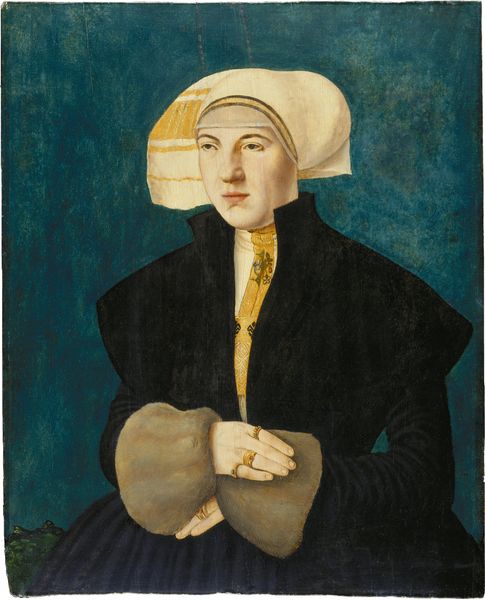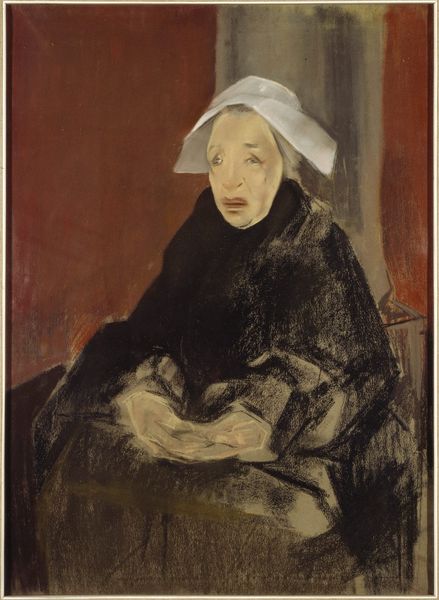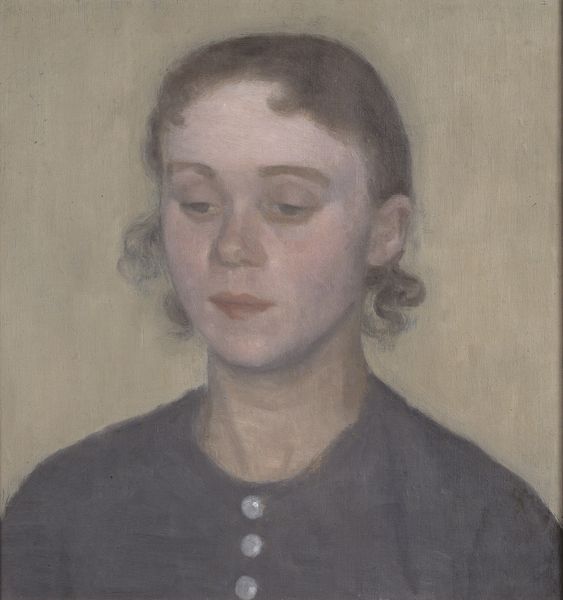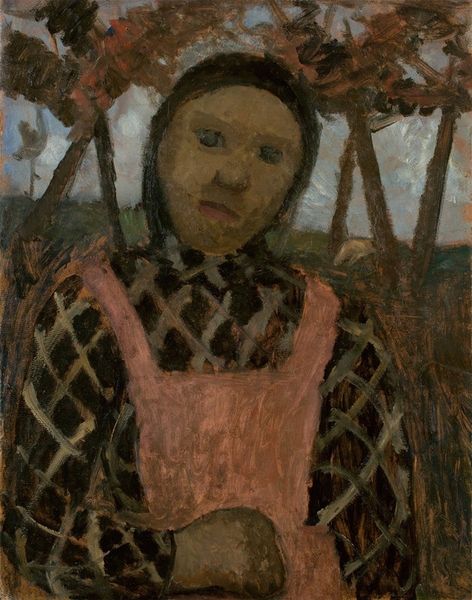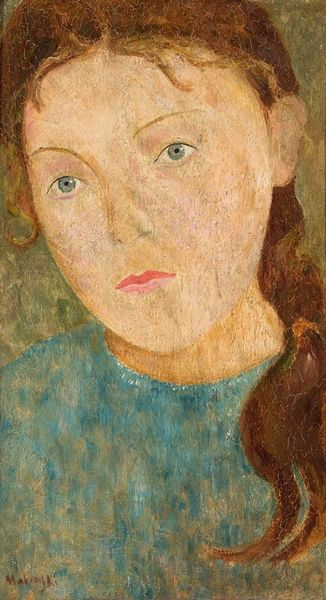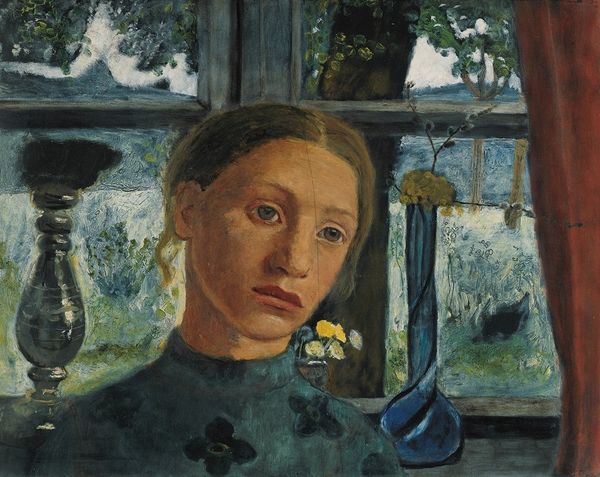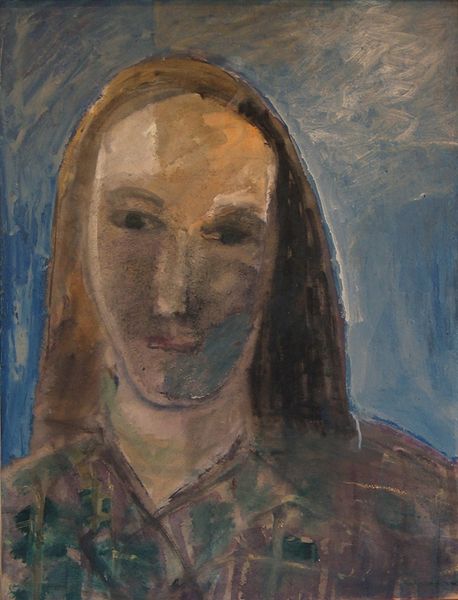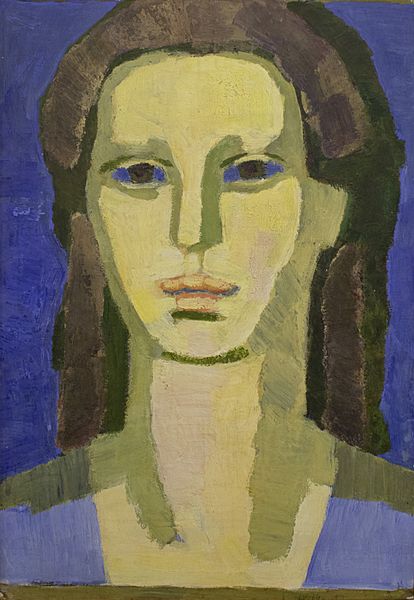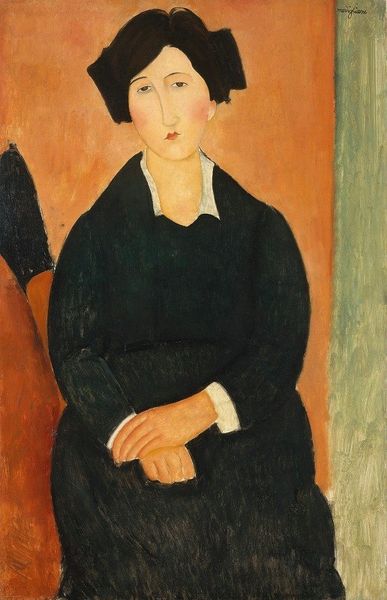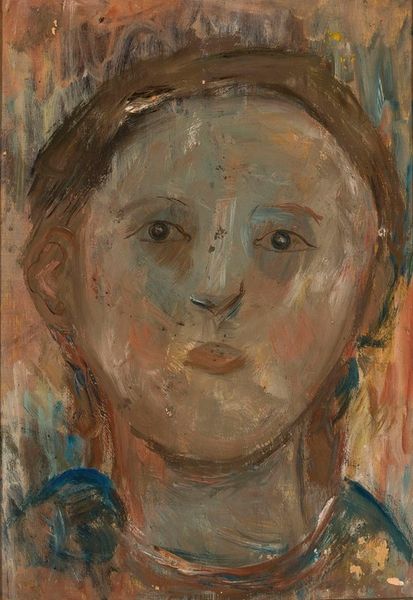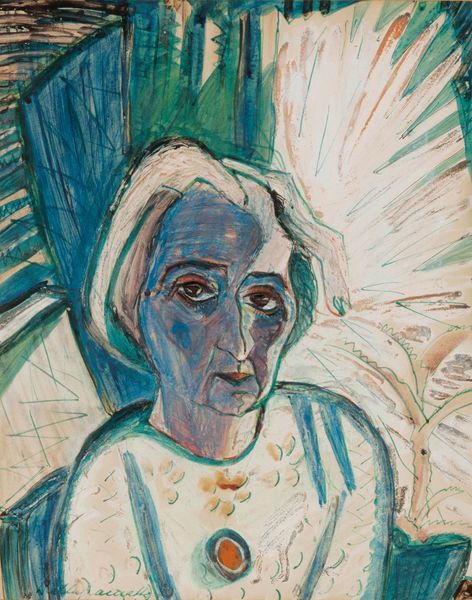
painting, pastel
#
portrait
#
painting
#
landscape
#
symbolism
#
pastel
#
post-impressionism
Dimensions: height 35 cm, width 26 cm
Copyright: Rijks Museum: Open Domain
Editor: This is Jan Verkade's "Memory" from 1893, a pastel painting. There's something hauntingly simple about the young woman in her bonnet set against that vivid, green landscape. It feels like a memory, distant and idealized. What stands out to you? Curator: The layering of pastel is interesting, isn't it? Notice how Verkade doesn't blend the colors traditionally, creating a tactile surface that speaks to the laborious process of its creation. We also can appreciate the significance of pastel as a medium, blurring the boundaries between painting and drawing in the late 19th century. Think of the accessibility pastel afforded artists. Were materials readily available, and who would be commissioning portraits at this time? Editor: That's interesting - so it's not just *what* is depicted, but the *how* and *why* of its creation. Was Verkade making a statement about art production itself by choosing pastel? Curator: Precisely. Consider the social context: post-impressionism, a rejection of academic art. The conscious decision to embrace pastel, rather than oil, can be interpreted as challenging established hierarchies within the art world, democratizing art. Think about the subject’s garb— is it folk dress? What kind of labor might be associated with these markers, especially considering that this artwork appears during the third republic, marked with anxieties concerning identity and modernity? Editor: So by focusing on the *material* aspects – the pastel, the clothes, the context – we understand more about Verkade's artistic choices, maybe even a subtle critique of the art world. Curator: Exactly! And that approach invites us to consider art less as a mystical creation, and more as a product shaped by tangible materials, social forces, and the means of production. It really does shift our "memory" of art history, doesn't it? Editor: Absolutely. I will be sure to keep material and process in mind when observing the artwork more critically. Thanks!
Comments
rijksmuseum about 2 years ago
⋮
The Zaandam painter Jan Verkade was a member of Les Nabis, a group of French painters around Paul Gauguin in Brittany. They had a marked preference for subjects taken from traditional village life, and worked in a colourful, stylized manner. In 1892 Verkade left for Fiesole in Italy, where he would live for three years. His memories of Brittany and appreciation of 15th-century Italian painting resulted in this charming ‘Breton Madonna.’
Join the conversation
Join millions of artists and users on Artera today and experience the ultimate creative platform.
